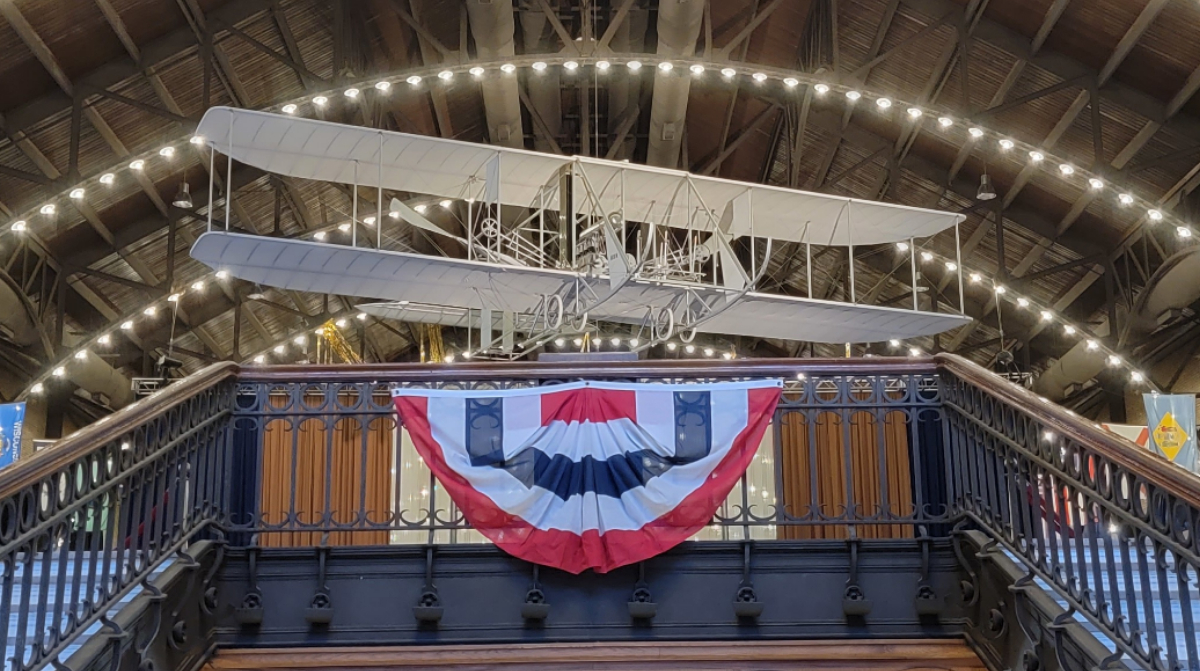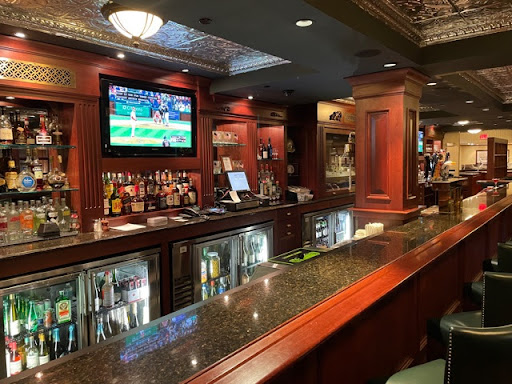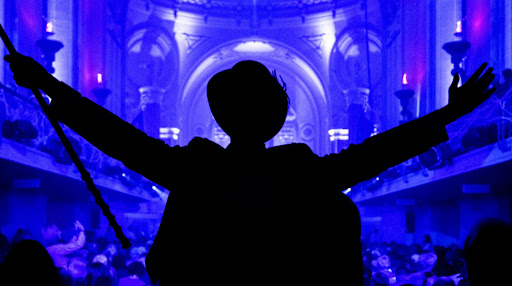Dahlgren Hall is famous for many reasons: as an armory after the Civil War, as the backdrop for festive “hops” throughout the years, and as the place where a perfect, full-sized replica of the Wright brothers' early naval aircraft is displayed in dramatic fashion, suspended from the ceiling right above where you enter the building.
Do you know why that last object is here? I didn’t, and I always wondered. So here’s what I found out...
The Dahlgren Hall Wright Flyer is a replica of a plane that was used by naval pilots starting in 1911, and it has a fascinating story.
Related: History of Dahlgren Hall
The Wright Brothers Fight for the Prize
When we think about Orville and Wilbur Wright, we celebrate their success in engineering the first flight on U.S. soil. In addition to the wins, there were also many failed attempts over the years. But I never realized that it also took years for the Wright brothers to sell their plans for a military aircraft to the Army. Since they had been burned by other inventors, the Army was wary about signing on. The Wright brothers protected their technology such that the Army was wary about them, too.
It wasn’t until four years after talks between the two groups started that a deal was struck in 1909. The Board of Ordnance and Fortification and the U.S. Signal Corps sent a request for bids, called the Signal Corps Specification 486, carefully designed to make the Wright brothers the only feasible bidders for flight trials. The specification stipulated that if their plane passed these requirements, the brothers would get $25,000, an enormous fee in those days (now equivalent to about $750,000!). If they surpassed the 40 miles per hour mark, they would also earn a bonus. The brothers’ flight averaged 42.5 miles per hour, so they ultimately brought home $30,000 ($900,000 today). Not a bad haul for a pair of bicycle shop owners!
The Wright Military Flyer Takes Off
After they got the contract, the Wrights presented the Army with an entirely new airplane - the first military airplane in the world, known as the Wright Military Flyer (or Signal Corps No. 1). The Army used the plane to train pilots in the fall of 1909 and in 1910, and then donated it to the Smithsonian Institution in 1911 after purchasing other aircraft. That same year, the U.S. Navy also bought a Wright Model B airplane and then modified it to take off from the water.
The Wright USNA Replica Story
That’s where our replica comes in. Did you know that most of the first naval aviators trained right here, on the banks of the Severn River across from the Naval Academy? They used the same aircraft that our replica was based on. So it was fitting that on September 15, 2006, the full-sized 1911 Navy B-1 replica was returned to Dahlgren Hall.
The story began even earlier. Over a period of 21 months, the “Wright Experience” of Warrenton, VA, built the open-air plane, using just the materials and techniques available to plane builders of that time. The company only produces about two or three Wright plane copies a year, so they are rare. Ours was intended to be a training tool as well. At the time it was delivered, company owner Ken Hyde said, "The Navy B-1 was cutting-edge technology in 1911. We're very excited that the aircraft exhibit is interactive, and can be lowered and used as a teaching [aid] to demonstrate its unique 'wing-warping' control system to naval aviators."
This particular model had the largest production run of any Wright brother airplane and was the second to enter service after the (Glenn) Curtiss A-1, which got in just four months earlier. With a 36-foot wingspan, crafted of spruce and ash and painted with aluminum paint (ostensibly done in the original to hide imperfections), the B-1’s impressive frame graces overhead Dahlgren Hall’s magnificent ‘53 Deck. It features seating for two pilots, as well as two rear-facing propellers driven by a four-cylinder engine. Instead of ailerons, wing-warping technology banks the plane. But that’s where the similarities to the original Wright Flyer end. The replica features a conventional rear-mounted empennage assembly and wheels on its landing skids.
The Skies Above Maryland
The plane serves as a tribute to the history of naval aviation at the Academy. Syd Rodenbarger, a 1970 USNA graduate that helped bring it here, noted, "This is a priceless piece of history…. Naval Academy graduates have been instrumental in aviation from the beginning, and all the way up to today." Rodenbarger became interested in bringing a replica to the Academy after seeing a picture of famed Naval Aviator Number 2 Lt. John Rogers getting ready to fly a B-1 outside of Dahlgren Hall, with a group of midshipmen looking on. With a little digging, a historian discovered that the Navy paid the Wright brothers $5,000 to build the B-1 and train someone to fly it. A flight log reveals that Lt. Rogers then flew that plane all over Maryland, including to the National Mall, Havre de Grace and College Park.
Wow! Can you imagine flying before there were even airports? The world was a very different place in 1911. And the view from the plane must have been very different, too. It’s a real thrill to see this full-sized piece of history “flying” through Dahlgren Hall.
The Yard is full of amazing things, as I discover every day. Come see the Wright Flyer for yourself, and have a meal at the Drydock Restaurant below! There are so many more treasures to unearth - and so many more USNA stories to enjoy.
-1.png)










